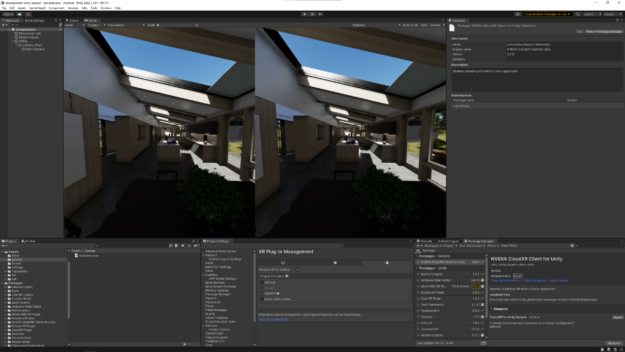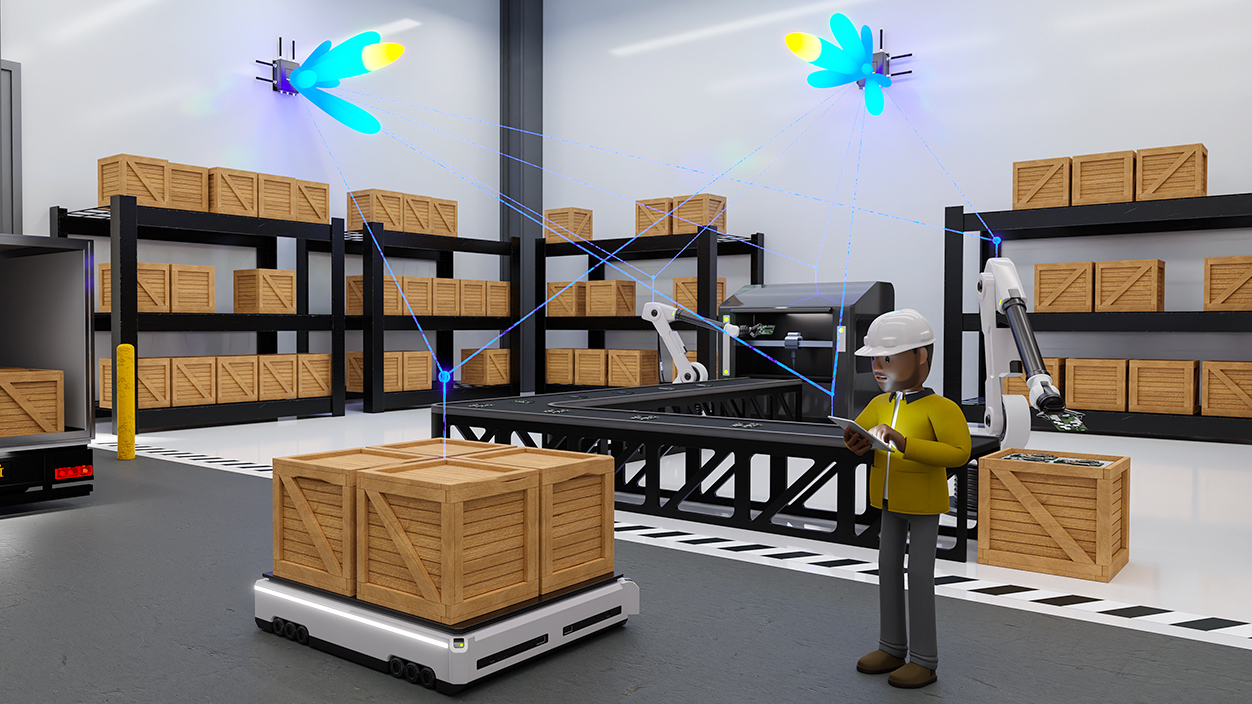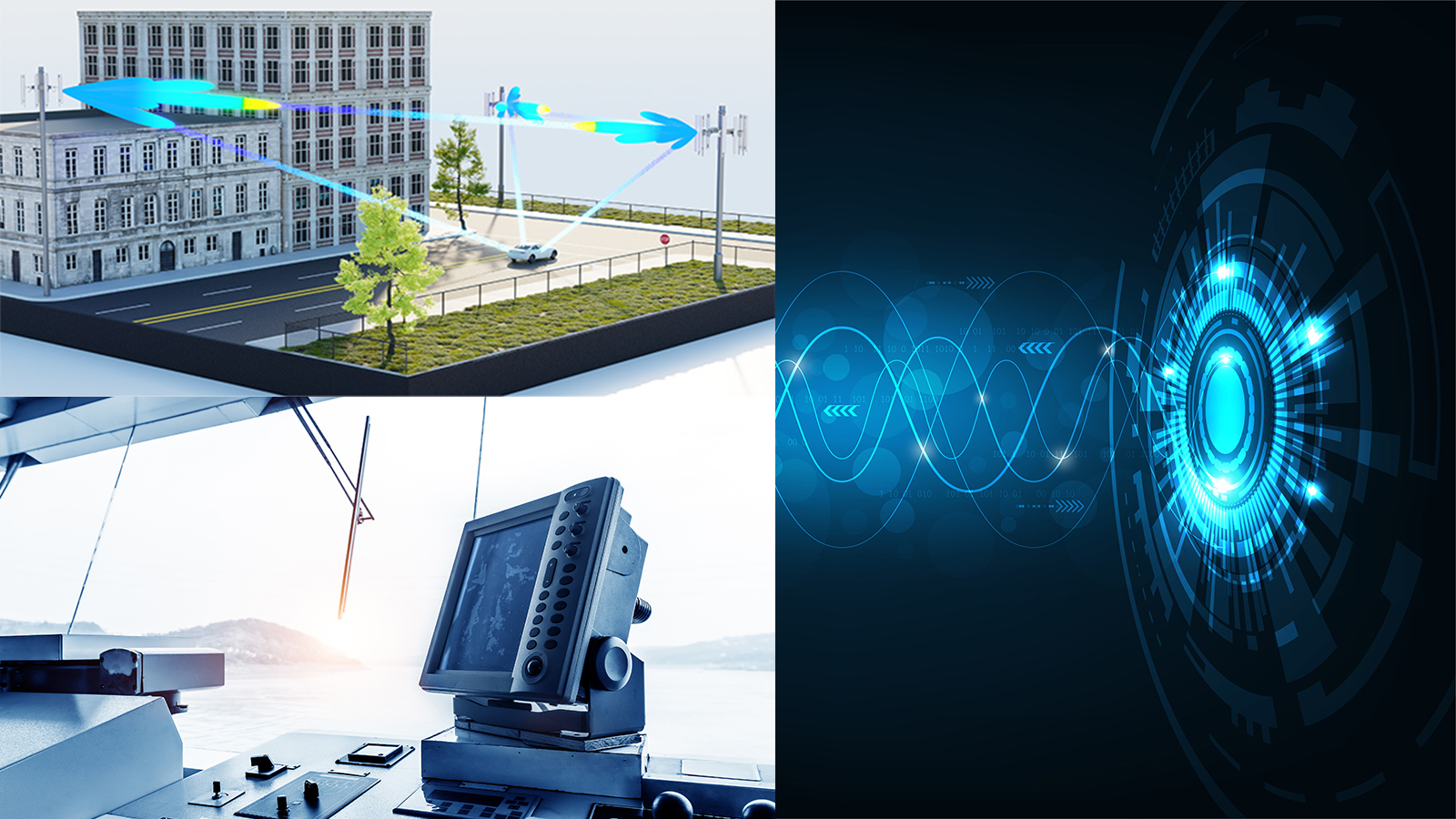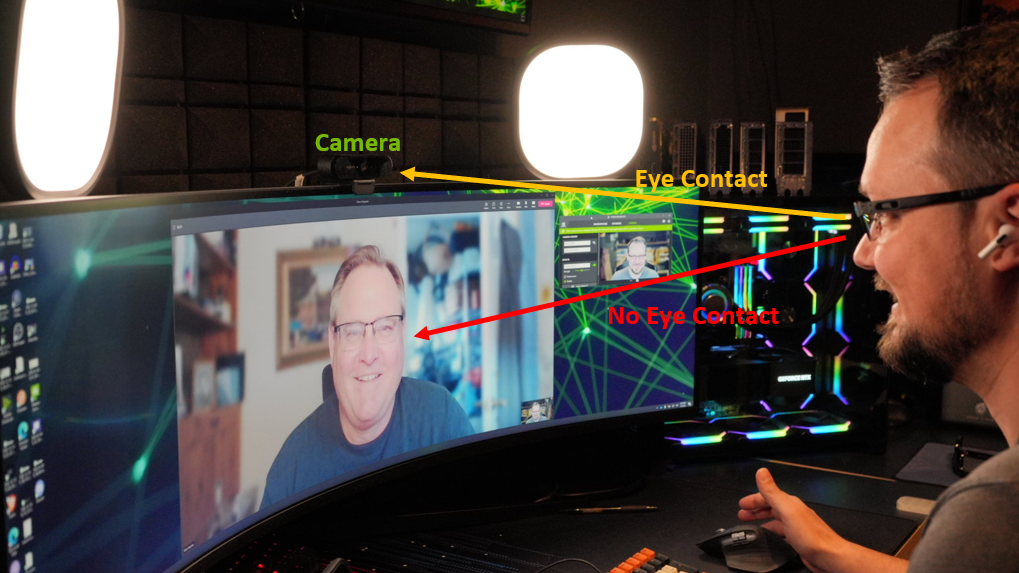During GTC 2023, NVIDIA announced the latest release of NVIDIA CloudXR that enables you to customize this SDK for your applications and customers, and scale extended reality (XR) deployment across the cloud, 5G Mobile Compute Edge (MEC), and corporate networks.
NVIDIA CloudXR 4.0 introduces new APIs that deliver enhanced flexibility for server and client application development. You can now use the cloud, 5G MEC, and on-premises servers as the distribution points for XR experiences.
The release provides you with multiple options to interface with NVIDIA CloudXR and adds the ability to gain better insights into the underlying network performance. It also makes it possible to scale on multiple platforms and includes support for optimized streaming on high-capacity networks.
NVIDIA CloudXR 4.0 also offers a new sample client that uses a Unity plug-in architecture. You can build on this sample to create custom user interfaces for your NVIDIA CloudXR clients. The Unity plug-in also enables you to build a single client that runs on multiple XR client devices.

NVIDIA CloudXR 4.0 introduces a variety of new features and benefits:
- NVIDIA CloudXR Server API: Gives you the option to build NVIDIA CloudXR directly into your applications, eliminating the server need for an OpenVR or OpenXR runtime. NVIDIA is also working with the team at Collabora to offer the ability to use Monado OpenXR as the API for NVIDIA CloudXR. NVIDIA CloudXR 4.0 continues to fully support the OpenVR API through the SteamVR runtime.
- Unity plug-in for the NVIDIA CloudXR client: Uses the Unity XR API and other Unity APIs to provide you with a way to create a full-featured NVIDIA CloudXR client built on the Unity engine that can be deployed across many XR client platforms.
- Low-latency, low-loss scalable throughput (L4S): Offers a “togglable” implementation of the advanced 5G packet delivery optimization, built to significantly reduce lag in interactive cloud-based video streaming.
Previously, immersing users in a high-fidelity XR experience required a physical tether to a workstation or desktop. Combining high-fidelity XR and mobile devices seemed impossible. But with NVIDIA CloudXR, you can choose which platform will best reach your customers.
The latest version of NVIDIA CloudXR represents the NVIDIA commitment to scalable, high-performance streaming of XR. The new features offered by the NVIDIA CloudXR 4.0 release now offer flexibility for you to use various XR runtimes for your applications. You also get the ability to create universal device clients customized to your applications for your customers.
“At VMware, we’re using NVIDIA CloudXR to enable our customers to stream high-fidelity XR experiences from platforms, like VMware Horizon, to standalone VR devices running VMware Workspace ONE XR Hub. This gives our customers the power of a graphics workstation along with the mobility of a standalone VR device. The flexibility that the NVIDIA CloudXR 4.0 release provides with new application and client APIs will enable us to improve the NVIDIA CloudXR integration with Workspace ONE XR Hub and improve overall solution performance,” said Matt Coppinger, director of product management, VMware.
To offer an optimal streaming performance, NVIDIA is also working with multiple partners, including Ericsson and Deutsche Telekom, in implementing L4S into NVIDIA CloudXR. You’ll be using the highest-performance streaming platform available for high-bandwidth, low-latency networks.
“We are seeing great optimization with L4S combined with NVIDIA CloudXR in reducing latency and network jitter,” says Dominik Schnieders, head of edge computing at Deutsche Telekom. “This will be a critical component of streaming XR for both enterprises and to consumers in the public 5G network.”
In addition to new server and client APIs and 5G network optimization, we have added a few highly requested features to help you build on NVIDIA CloudXR:
- Generic controller support: Developers of NVIDIA CloudXR clients can create input mappings for unique HMD controllers.
- Callback-based logging: This enables greater flexibility in handling log messages where applications can specify the callback function and perform actions with the log messages, such as filtering and writing to a file.
- Flexible stream creation: Devices are typically associated with a particular type of video stream, for example, a mono RGB stream for a tablet or a stereo RGBA stream for a mixed-reality HMD. With NVIDIA CloudXR 4.0, you can indicate which streams to initiate for a particular device or platform.
The new NVIDIA CloudXR 4.0 SDK builds on the features requested by the XR developer community. It’s a significant step in changing how enterprise XR software is distributed. The advent of scalable XR streaming essentially redefines the enterprise developer’s customer. From a person with access to a dedicated high-end workstation, they can now be anyone with a mobile XR display and access to the corporate network.
At the same time, IT personnel stretched by maintaining a distributed set of XR workstations can now focus on scaling XR from the data center.
Project Aurora is a full hardware and software stack for distributing XR in private and public networks. Combined with the new NVIDIA CloudXR 4.0 SDK, it is the linchpin that offers flexibility, performance, and ease of deployment. IT departments can seamlessly deliver XR applications to an unlimited number of users within their networks.
For more information, join us at GTC 2023:
- Next-Gen XR Streaming: The New Features of NVIDIA CloudXR: This session covers NVIDIA CloudXR 4.0, with its improvements into application extensibility.
- Building NVIDIA CloudXR Client Applications Quickly with Unity: Learn about the new server interface that enables native development with NVIDIA CloudXR and discover new ways of building clients.
Learn more and apply for NVIDIA CloudXR through the NVIDIA Developer Zone.










